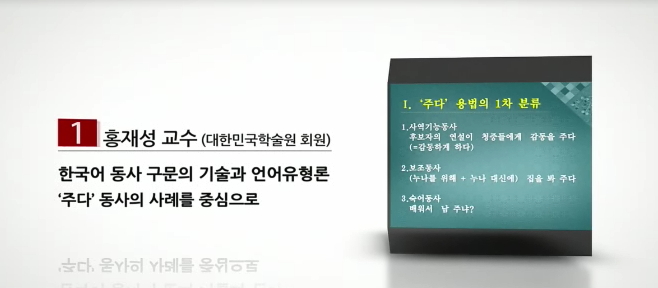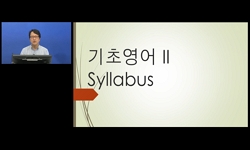The present study aims to explore the concepts of finite and non-finite. The term finite means ‘finished’ (from the Latin finitus) or ‘limited’. Traditionally, ‘finiteness’ is concerned with variation for person and number, and is applied ...
http://chineseinput.net/에서 pinyin(병음)방식으로 중국어를 변환할 수 있습니다.
변환된 중국어를 복사하여 사용하시면 됩니다.
- 中文 을 입력하시려면 zhongwen을 입력하시고 space를누르시면됩니다.
- 北京 을 입력하시려면 beijing을 입력하시고 space를 누르시면 됩니다.
https://www.riss.kr/link?id=A106447843
- 저자
- 발행기관
- 학술지명
- 권호사항
-
발행연도
2019
-
작성언어
English
-
주제어
Non-finite clause ; Finite clause ; Tense ; Non-tensed ; Verb ; 비정형절 ; 정형절 ; 시제 ; 비시제 ; 동사
-
등재정보
KCI등재
-
자료형태
학술저널
-
수록면
287-294(8쪽)
-
KCI 피인용횟수
0
- DOI식별코드
- 제공처
-
0
상세조회 -
0
다운로드
부가정보
다국어 초록 (Multilingual Abstract)
The present study aims to explore the concepts of finite and non-finite. The term finite means ‘finished’ (from the Latin finitus) or ‘limited’. Traditionally, ‘finiteness’ is concerned with variation for person and number, and is applied to verbs, in which they take on different inflectional forms depending on the person and number of their Subjects. However, in present-day English it makes much more sense to speak of finite and non-finite clauses (or constructions), since the verbal paradigms contain almost no forms with distinct endings. As a generalization we can say that any clause that is tensed is also finite. However, not all finite clauses are tensed. Specifically, subjunctive clauses and imperative clauses are finite, but not tensed. Despite not containing a tensed verb, subjunctive clauses can be considered to be finite because they alternate with tensed clauses, and because they resemble the structure of typical tensed clauses in two respects: they must have a Subject, and they take the same subordinator as some tensed clauses do, namely that[1][11]. We distinguish four types of non-finite clause, namely to -infinitive clauses, bare infinitive clauses, - ing participle clauses, and past participle clauses. Such clauses do not carry tense.
참고문헌 (Reference)
1 Coates, Jennifer, "The Semantic of the Modal Auxiliaries" Croom Helm 1983
2 Fowler, H. W., "The King's English" Clarendon Press 1931
3 Close, R. A., "Studies in English Usage; The Resources of a Present-Day English Corpus for Linguistic Analysis" Peter Lang 1977
4 Bradley, C. B., "Shall and Will - An Historical Study" Transactions of the American Philological Association 1911
5 Lakoff, R, "Papers from the Eighth Regional Meeting of the Chicago Linguistic Society" Department of Linguistics, University of Chicago 229-246, 1972
6 Bas Aarts, "Oxford Modern English Grammar" University College London 2011
7 Nadira Aljović, "Non-finite Clauses in English" University of Zenica 2017
8 Jenkins, L., "Modality in English Syntax" MIT 1972
9 Jespersen, O, "Essentials of English Grammar" George Allen & Unwin Ltd 1956
10 Christophersen, P, "An Advanced English Grammar" Macmillan 1965
1 Coates, Jennifer, "The Semantic of the Modal Auxiliaries" Croom Helm 1983
2 Fowler, H. W., "The King's English" Clarendon Press 1931
3 Close, R. A., "Studies in English Usage; The Resources of a Present-Day English Corpus for Linguistic Analysis" Peter Lang 1977
4 Bradley, C. B., "Shall and Will - An Historical Study" Transactions of the American Philological Association 1911
5 Lakoff, R, "Papers from the Eighth Regional Meeting of the Chicago Linguistic Society" Department of Linguistics, University of Chicago 229-246, 1972
6 Bas Aarts, "Oxford Modern English Grammar" University College London 2011
7 Nadira Aljović, "Non-finite Clauses in English" University of Zenica 2017
8 Jenkins, L., "Modality in English Syntax" MIT 1972
9 Jespersen, O, "Essentials of English Grammar" George Allen & Unwin Ltd 1956
10 Christophersen, P, "An Advanced English Grammar" Macmillan 1965
11 Fries, C. C., "American English Grammar" Appleton-Century-Crofts 1940
12 Poutsma, H., "A Grammar of Late Modern English, 5 vols" Noordhoff 1926
동일학술지(권/호) 다른 논문
-
- 사단법인 인문사회과학기술융합학회
- 황혜선
- 2019
- KCI등재
-
A Study on the Effectiveness of Dementia Education Program for Volunteer Workers
- 사단법인 인문사회과학기술융합학회
- 박영선
- 2019
- KCI등재
-
중년 이상 기관지확장증 환자들의 합병증 예방을 위한 건강행위와 관련된 인자
- 사단법인 인문사회과학기술융합학회
- 이성란
- 2019
- KCI등재
-
초기성인 대학생들의 감사일기 활동이 자아탄력성에 미치는 영향
- 사단법인 인문사회과학기술융합학회
- 황순정
- 2019
- KCI등재
분석정보
인용정보 인용지수 설명보기
학술지 이력
| 연월일 | 이력구분 | 이력상세 | 등재구분 |
|---|---|---|---|
| 2020 | 평가예정 | 신규평가 신청대상 (신규평가) | |
| 2019-12-01 | 평가 | 등재 탈락 (기타) | |
| 2019-01-01 | 평가 | 등재학술지 유지 (계속평가) |  |
| 2016-01-01 | 평가 | 등재학술지 선정 (계속평가) |  |
| 2014-01-01 | 평가 | 등재후보학술지 선정 (신규평가) |  |
학술지 인용정보
| 기준연도 | WOS-KCI 통합IF(2년) | KCIF(2년) | KCIF(3년) |
|---|---|---|---|
| 2016 | 0.33 | 0.33 | 0.32 |
| KCIF(4년) | KCIF(5년) | 중심성지수(3년) | 즉시성지수 |
| 0.33 | 0.32 | 0.407 | 0.14 |




 KCI
KCI 스콜라
스콜라






